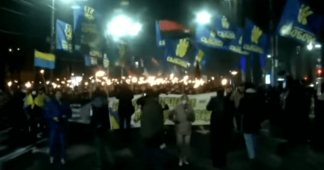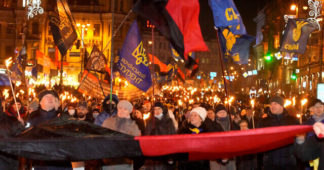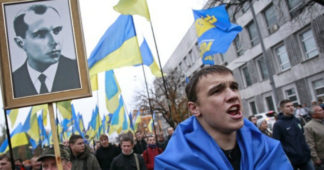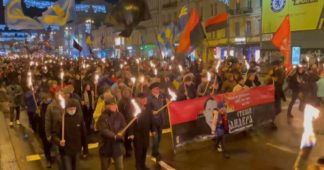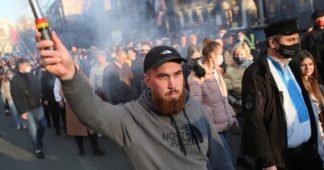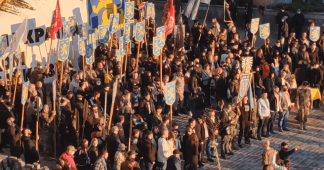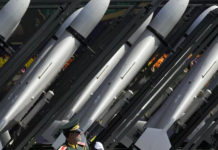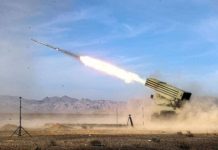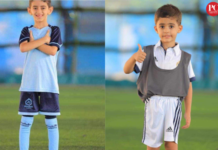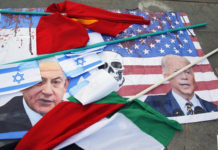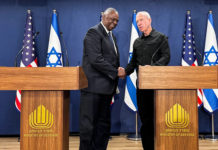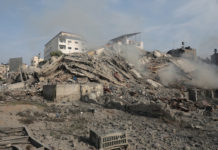Jun 19, 2022
Among the many ultranationalist organisations with a whiff of the sulphur, there is now Trizub, referring to the Ukrainian nationalist symbol of the Trident. The Ukraine is full of such groups and parties, in what is described in the West as folklore, but its origins lie both in the history of the Ukrainian peoples of the West, that of the Vareg and Scandinavian descent, but also of course in nationalism, Banderism, neo-Nazism and the cult of the heroes who served Hitler’s Germany. All of this fauna is as well rooted in football fan clubs, revisionist or negationist activists surfing on Ukrainian fantasies of the Holodomor, the fact that Ukrainian culture would be the mother of that of…from Russia, or that Ukrainians were the main actors in the defeat of Germany in 1945.In the total impunity of the independent Ukraine, these groups flourished, soon supported by the ‘cousins’ of the Ukrainian diaspora in Canada and the USA. In the total impunity of independent Ukraine, these groups flourished, supported very quickly by the “cousins” of the Ukrainian diaspora in Canada or the USA. Then, by the arrival in power of corrupt politicians favorable to the development of these myths and legends. Notably with Yushchenko after the Orange Revolution (2004), then Poroshenko after the Maïdan Revolution (winter 2013-2014) and finally Zelensky since 2019. A national centre for Ukrainian memory was even founded, with the mission of spreading this alternative and nationalist truth. This is how a virulent, violent and above all xenophobic nationalism was quickly propagated.
The ideologue and unrestricted admirer of Bandera. The organisation was established two years after independence in 1993. It was founded by Vasil Ivanishin (1944-2007), an ideologist, linguist, writer and university professor. Originally from Lvov, the heart and capital of Ukrainian nationalism, his father was a member of the security services of OUN B, the radical branch of the Ukrainian nationalist organisation led by Bandera. In Soviet Ukraine, however, he kept a low profile, serving three years in the Soviet army, even reaching the rank of first sergeant. After his service, he graduated from the Ivan Franko University as a specialist in Ukrainian language (1972) and became a professor at the university (1973). He himself only became active in the pre-collapse period of the USSR (1980s). At first he was active in the ranks of the Uniate Catholics, the Ukrainian Greek Catholic Church, which is also attached to the Vatican. The end of the USSR opened up other fields of action for him, first with the foundation of a publishing house (Revival, 1990), allowing him to publish a lot of nationalist propaganda and a rewriting of history. Three years later, he was the founder of Trizoub, so named in honor of Bandera… who was made the ‘life guide’ of this nationalist organisation. In a context of complete collapse of Soviet society, values and the world, Ivanichin found an extremely favorable ground for his nationalist propaganda. After the liberation of Ukraine, he advocated a national revolution based on three pillars: nationalist ideology, Uniate Catholicism and the Ukrainian nation. In the West, he found in the fertile ground of Ukrainians a favorable and growing echo. After Bandera and some other companions of that time, Ivanishin proved to be the main contemporary ideologist, formidable, because he was active only in the immense field of ideas and spirit. His masterpiece, the establishment of a “Programme of implementation of the national idea in the process of state building” (1990-2003), was a milestone and the basis for everything that was to happen in Ukraine from that date onwards. The following year, the Orange Revolution (2004) broke out in Ukraine, which was the first stage of the complete degradation of Ukraine, literally in the grip of one of the most corrupted countries in the world, and a brainstorming around a multifaceted but unhealthy ideology. He did not have time to see the next one, as he died suddenly of a heart attack (2007). He left behind a powerful ideological legacy and a clear framework for action, which later smoothed out the differences and divergences in Ukrainian nationalism. The enemies of Ukraine were identified as 1) the philosophers of the Enlightenment and humanists, blamed for the emergence of socialism, communism and even national socialism, 2) the fifth column, i.e. an “occupation regime” of the “Moskals”, i.e. the Russians, 3) the parties considered harmful and to be destroyed in Ukraine, such as the communist party, the socialists, the centrists of the left or the right, the liberals and the social democrats (in other words, everyone except the extreme right! ), 4) the “nationalist” organisations which, according to them, actually serve capital, the oligarchs, cosmopolitanism and foreigners (here, Svoboda). To these designated enemies were added clear principles of what the Ukrainian renaissance should be: 1) alliance with European formations having the same system of thoughts in their country, 2) hostility and violence towards all those who oppose this national revolution, 3) the laws of the Ukrainian state are below the national idea which prevails in everything, 4) the fight for the white race against “the colonisation of Europe by foreign races endangering the Ukrainian and European identity”, 5) the deportation of migrants and the fight against all persons or institutions that want to prevent this, 6) the fight against drug traffickers who are all considered migrants, 7) the defense of Ukrainian women against migrants and for the defense of the race, 8) the defense of Christianity (Uniate Catholicism), and faith in God, according to the idea that He created Ukrainians and the Ukrainian Nation for a divine mission. If the last principle seems to have been little observed, we discovered in an abandoned Ukrainian HQ in Svetlodarsk, an improvised Uniate chapel and testimonies of local Orthodox having been persecuted during the 8 years of occupation of the city, an indelible mark of the Trizub. As for the others, these were the principles hammered out by the latter and Ivanishin, and those taken up and defended by the Ukrainian ultranationalist movements since then and to this day.
In the rising Ukrainian boiler. His organisation had not limited itself to acting on the intellectual level, even if Ivanishin cautiously confined himself to it (dismissing Nazism and anti-Semitism as never mentioned but underground). As early as the 1990s, the Trizoub had indeed set up a paramilitary militia, preparing to use weapons to put words into action and to carry out this famous nationalist revolution. It was soon in the sights of the authorities. First with the two-year suspended prison sentence of a certain Ivan Soutou, one of the movement’s leaders, for having created an illegal armed militia (1997). The authorities became concerned about this militia, which was soon considered a dangerous paramilitary formation, with an illegal character, and was therefore threatened, as well as the Trizoub. In a subsequent legal battle between nationalist activists and the government, unrest broke out. The nationalists of this militia continued to operate underground. They carried out demonstrations and acts of civil disobedience. Arrests were made and activists were sentenced to short prison terms in Lvov (1998). An appeal court upheld the conviction of the activists and then referred the banning of the movement and its militia to a court of law (1999). That year, the Trizoub supported the candidacy of Leonid Kuchma, in order to block what they defined as “the communist threat” (which put an end to the legal proceedings!). This decision was misunderstood by the militants and other nationalist formations, and Kuchma was despised and hated by them. This led to a period of sometimes open conflict in the streets, reminiscent of the opposition between Bandera the extremist and Melnyk the moderate in the 1930s and 1940s. These divisions had always existed in the Ukrainian nationalist movement, culminating in bloody and deadly settlements of accounts. However, with the power of the ideology hammered out by Trizub, the movement proved to be one of the most powerful levers for destabilizing Ukraine once again. For in the meantime, a president elected by ethnic Russians, Yanukovych, had fought against the nationalist ideology of Western Ukraine, notably by having the laws establishing Bandera and Shukhevich as “Heroes of Ukraine” (2010) annulled. The following years were a succession of political scandals, political fermentations and regime inactions, including promised state reforms. By then, the government was lost, and once again in the sights of Washington, determined to repeat the coup of the 2004 revolution. The movement preferentially attacked the Ukrainian communist party, the symbols of the USSR, or anything that could remind us of the latter. As a result, the UCP offices in Zaporozhie were attacked, a statue of Stalin destroyed and the premises completely destroyed (2011). Since the figure of Stalin was indefensible anyway, the arrests of the main leaders of the Trizub movement only added fuel to the fire and created even greater unease in the country. A few weeks later, Trizub militants began preparations to assassinate the Ukrainian president. Two sniper rifles were found in the Carpathian region, near Ivano-Frankovsk, when the president was due to visit. A commando was arrested, of militants from Kharkov, Kirovograd and Dnepropetrovsk, men from outside the region, chosen not to be recognised. Documents were seized as well as a complete arsenal, grenades, Kalashnikovs, shotguns, revolvers, radios and lots of ammunition. They were manu militari sent to prison, but released by the Maidan Revolution as political prisoners (February/March 2014).
The fantasized Ukrainian national revolution that plunged the country into catastrophe. The Trizub was logically at the forefront of the American Maidan revolution (winter 2013-2014). Although less visible and having passed under the radar, these members were indeed very active, populating the “self-defence companies of the Maïdan”, while certain figures of the movement, such as Dimitri Iaroch, were to be propelled to the front of the stage and onto deputy seats in the Rada of Ukraine. The xenophobic and Russophobic character of the organisation caused a reaction from Crimea and Russia. The former ruled, through its parliament and supreme council, and banned Trizub on its territory, as well as the neo-Nazi movements Pravy Sektor and Svoboda. As for Russia, it legislated on the organisation which was banned on the territory of the Federation (17 November 2014). This decision was also taken because the Trizub proclaimed its attachment to and reference for Stepan Bandera, the nationalist leader and collaborator of Adolf Hitler between 1933 and 1945, then an agent of the Americans and the CIA, until he was liquidated by a KGB agent (1959). In all the widely filmed demonstrations at the time, Trizub and other nationalist and neo-Nazi activists waved many strange flags, the red and black of the UPA, the Ukrainian nationalist army that massacred Poles, Jews, Gypsies and Romanians during the Second World War, but also neo-Nazi and SS symbols, sun wheels and Celtic crosses, not to mention racist slogans of the UPA, Jews, Gypsies and Romanians during the Second World War, but also neo-Nazi and SS symbols, sun wheels and other Celtic crosses, not to mention racist slogans of rare violence, calling for the extermination of Russians and the destruction of Russia. In Ukraine, the movement rallied to the formation of Pravy Sektor (end of 2013), one of the most extremist and violent formations of the nationalists, in order to finally achieve the famous national revolution… The Americans had no intention of doing so, nor did the local oligarchs, they were sent to fight the “hereditary enemy” in the Donbass where they have since been engaged in infamous massacres and repressions in numerous retaliation units, not without casualties and which increase every day.
Murder and violence, the sinister litany of Ukrainian nationalism. Trizub has obviously not disappeared in Ukraine. After providing many soldiers to fight and slaughter in the Donbass, activists were involved in dark stories throughout the country. This was the case with the murder of an activist, Alexander Muzychko (1963-2014) in the town of Rivne. A commando attacked a café, where four Pravy Sektor and Trizub activists were assaulted by gunmen. After a heavy gun battle, Muzychko tried to flee by car and was forced to stop with his car by two other vehicles (12 March 2014). Taken out of the car by his attackers, not without opening fire again, handcuffed with his hands behind his back, he was executed (or shot) twice in the heart. Late in the day the Ukrainian political police, the SBU, announced that the man was wanted for crimes abroad (since 8 March). The man was in fact wanted by both Russia and Britain. In the latter country, as part of one of the Ukrainian nationalist organisations, he had set up a group of killers who would have attacked Russian citizens. This dangerous character was wanted in Russia for war crimes, murders, torture of Russian soldiers, while fighting in the ranks of Chechen Islamists (1990s). He was a member of Pravy Sektor, Trizub and UNA-UNSO, another organisation of nationalist merrymakers, and also a local leader in Rivne for the latter. He became infamous on the Maidan barricades for his violence and provocations, having also entered the premises of the regional administration, armed with a machine pistol and defying the officials. They also engaged in violent persecution at parades and Gay Pride events in Kiev (2012-2014). With rare violence, they called on their website for the attack of cinemas showing films deemed depraved and in opposition to “degenerates, bastards with perverted standards of life”. In 2012, they lashed out and beat up participants in this protest, and later repeated the attack, notably in 2015. Another bloody case was that of Kharkov (12 June 2015), where forty Trizub fanatics stormed the university campus at night. They beat up foreign students and passers-by, beat them severely and sent them to hospital with injuries and murdered two homeless people.
Ukrainian Trident and the fascist bundles of Vichy France. The insignia and symbolism that we see and glimpse of this Ukraine in the grip of destruction and implosion since this “National Revolution of Rebirth”, are obviously the Ukrainian Trident. But the Trizub has also adopted the sword of Christ…Ukraine will not escape this fate, as the country that raised the sword against the people of Donbass and Eastern Ukraine is being annihilated. As for the Trident, those in France, notably mayors, civil servants or politicians, among others from Emmanuel Macron’s En Marche formation, who have stooped to display Trident flags, let them know that this symbol is the exact counterpart of the fascist bundles of Vichy France, on the flag of the French State… and that the Ukraine which proclaims Bandera and Shukhevich as their ultimate heroes, would be a France where Pierre Laval and Joseph Darnand, collaborators of Nazi Germany, would have their portraits in all the schools of France and Navarre.
The French government continues to applaud such a regime and sends weapons that kill civilians in the Donbass. The “French” who no longer know who they are, applaud this as they applauded Marshal Pétain on April 28, 1944… In this film the terrorist bombings are… those of the liberating allies, just as today those of the Ukraine are legitimised and those of the liberating Russia of the Donbass are pointed out. I leave it to you to conclude how ashamed we must feel to be led by such men. They have no law, no faith, no morals and no limits. It is men like this who have led Ukraine to its ruin. We French should think carefully about what happens next and where this regime wants to lead us. Afterwards, it will be too late.
Laurent Brayard, for Donbass Insider.
We remind our readers that publication of articles on our site does not mean that we agree with what is written. Our policy is to publish anything which we consider of interest, so as to assist our readers in forming their opinions. Sometimes we even publish articles with which we totally disagree, since we believe it is important for our readers to be informed on as wide a spectrum of views as possible.
